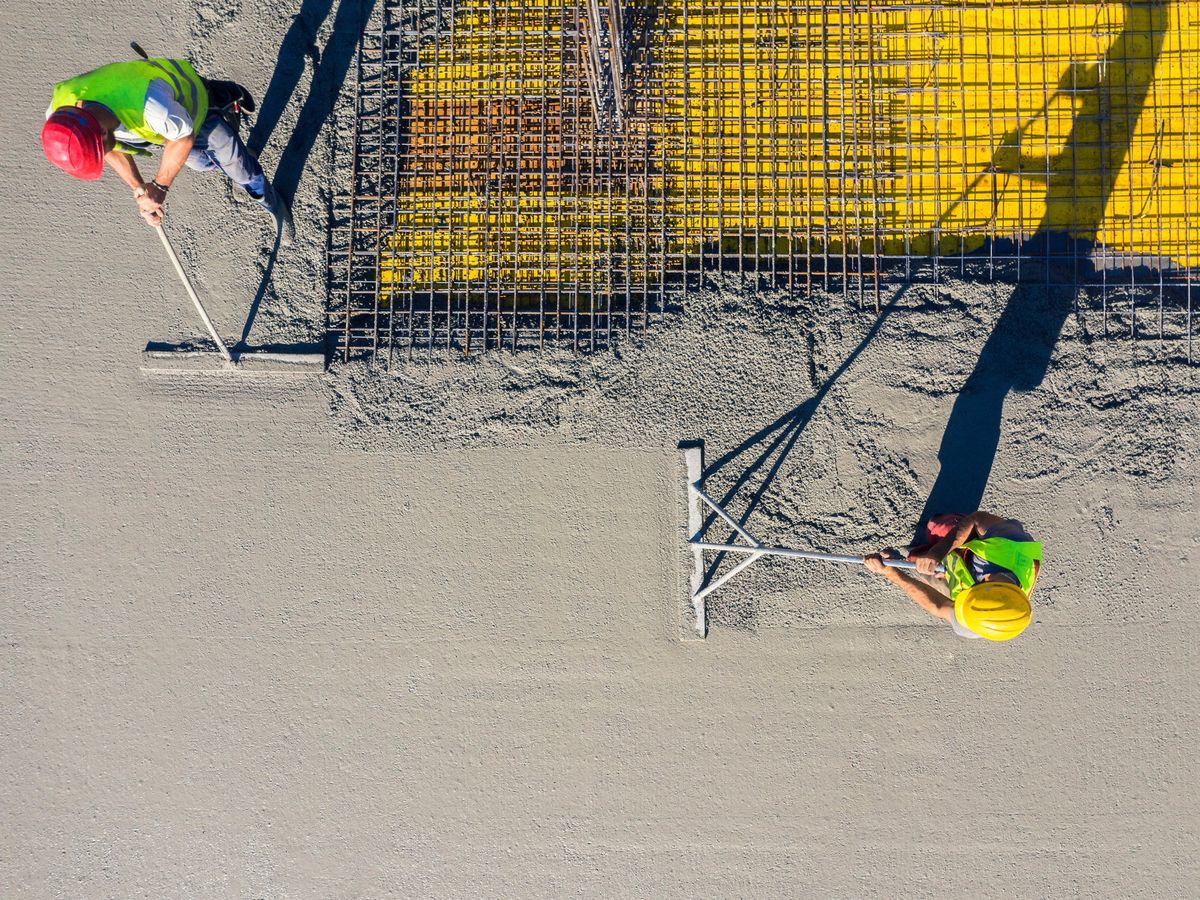After water, concrete might be the substance humans use most. But it comes at a cost: Making cement, which holds concrete together, results in almost 8 percent of global carbon emissions. Aviation produces 2.5 percent and gets plenty of flak for it, prompting the industry to reduce its carbon footprint. The cement industry, meanwhile, has flown under the radar.
One sign of increasing awareness of concrete’s carbon problem came in January, when New Jersey became the first U.S. state passing a law to promote low-carbon concrete use through business tax credits.
Researchers, meanwhile, are doing their part to cut the carbon footprint of concrete. Washington State University engineers recently reported creating a variety of concrete that absorbs more carbon dioxide than it emits.
They made the carbon-negative concrete by replacing a third of the cement in it with biochar, a kind of charcoal made from agricultural and forestry waste. “With this, we should be able to help get to carbon neutrality of the built environment,” says Xianming Shi, a WSU civil and environmental engineering professor. Shi and his graduate student Zhipeng Li reported their approach in the journal Materials Letters.
Cement makes up less than 15 percent of concrete—the rest is a combination of water and gravel or crushed stone. But the high-temperature chemical reaction needed to make it accounts for concrete’s disproportionately high carbon footprint. “Producing each tonne of cement releases roughly 0.9 tonnes of carbon dioxide,” Shi says.
Researchers are attempting to reduce that footprint by tackling every step of the concrete-production process. Some are hacking away at cement making’s energy use by making the process more energy efficient or by using renewable energy. Others have replaced cement in concrete partly with construction and industrial waste, mining slag, and fly ash. Some teams are making concrete with captured carbon-dioxide emissions, while others are adding biological materials like algae, bacteria, and blood enzymes into concrete to make it pull carbon dioxide from the air. “Every piece of the puzzle is being worked on,” Shi says. “But even with that you’re only reducing the carbon footprint of concrete by 70 to 80 percent, not 100 percent.”
Shi and Li made their carbon-negative concrete by swapping 30 percent of the cement with an engineered biochar. Biochar is made today by heating waste materials like wood chips, rice husks, or water-treatment sludge at high temperature in a low-oxygen environment. Others have tried replacing cement with biochar before, but swapping even 5 percent dramatically decreases concrete’s strength and durability.
To get around that problem, the duo first treated the biochar with wastewater produced during concrete production. The alkaline, calcium-laced wastewater soaks into the porous biochar, where it reacts with carbon dioxide in the air to produce calcium carbonate. This calcium carbonate strengthens the biochar and helps it bind better with cement, giving strong concrete.
The biochar-cement mix leads to carbon-negative concrete due to several factors. First, the biochar is a carbon sink, soaking up to 23 percent of its weight in carbon dioxide from the air. Next, by replacing cement partly with biochar, “you are replacing a carbon-intensive material with a carbon-reducing material,” Shi says. Finally, he adds, biochar is made from “biomass that otherwise will be landfilled where it releases carbon dioxide, or methane, which is a stronger greenhouse gas than carbon dioxide.”
A startup called CarbiCrete is also developing carbon-negative concrete. Instead of cement, the company uses waste slag from steelmaking in its concrete mix, and uses carbon dioxide captured from industrial plants to cure the concrete. One downside is that the concrete must be preformed and cannot be poured and set on site.
Shi’s group is focusing on using engineered biochar to bring down concrete emissions. While the current paper reports on carbon-negative concrete, his group is also working on reducing the emissions of cement itself to make it carbon-negative.
Biochar is a material that humans have known for centuries. It has recently become popular among farmers and gardeners as a soil amendment to improve soil health, and it also absorbs carbon from the air and from organic matter. Using it in cement makes even more sense for sequestering carbon, Shi says. “When you put it in soil, in say a hundred years the carbon will go back into the atmosphere as carbon dioxide or methane, so it’s not staying there forever. But in concrete, the carbon is locked there forever.”
Shi says his research has gotten interest from the concrete industry, and he is now planning a spin-off to develop the carbon-negative concrete.
- A Hard Look at Concrete ›
- Capture Carbon in Concrete Made With CO2 ›
- Green Concrete Could Solve Big Tech’s Emissions Problem - IEEE Spectrum ›
Prachi Patel is a freelance journalist based in Pittsburgh. She writes about energy, biotechnology, materials science, nanotechnology, and computing.



